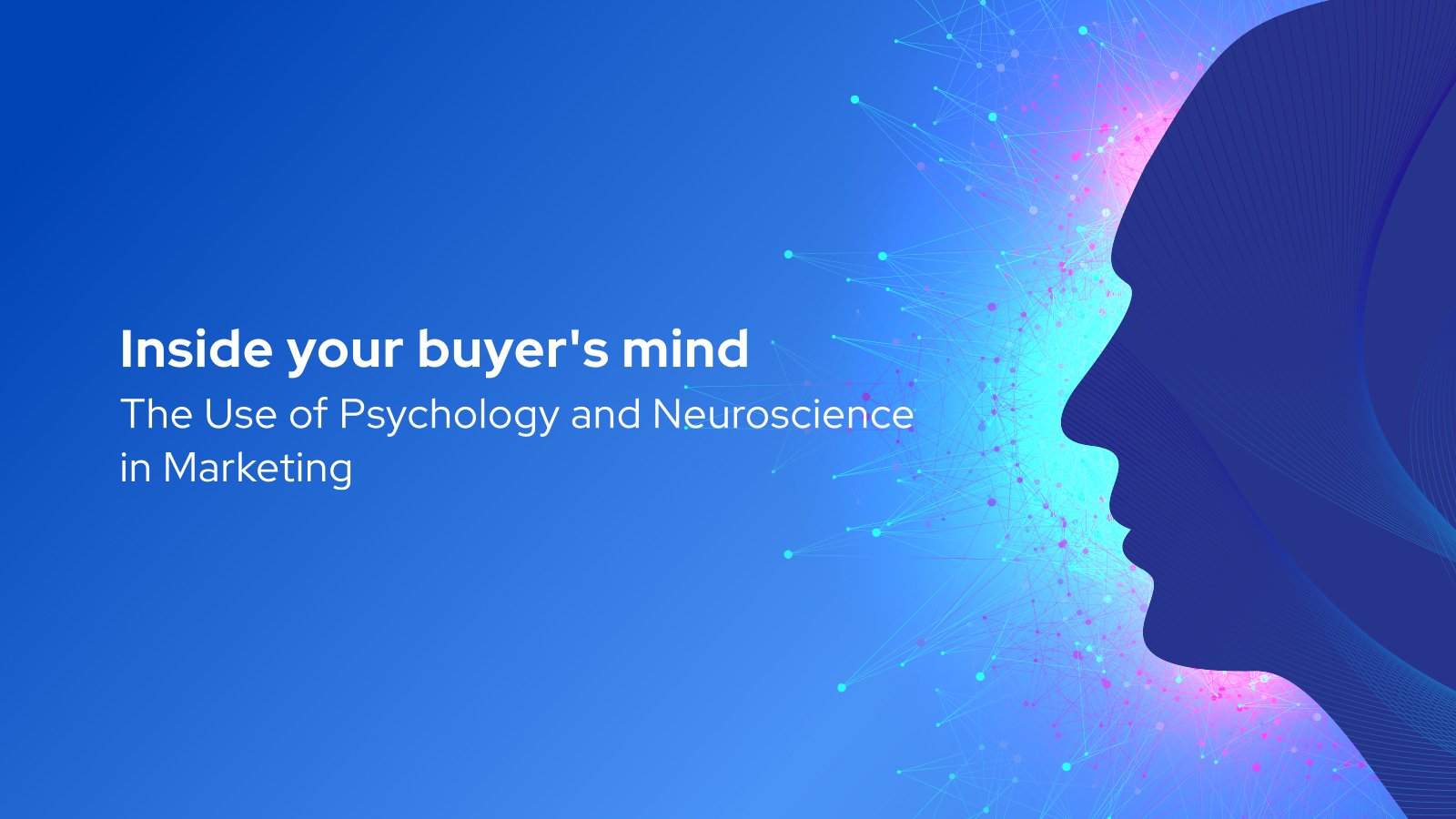How do people make the decision to buy a product or service? What can an understanding of the human brain tell us about effective marketing? How can businesses use psychology to increase brand value and deliver better returns on tactical marketing?
These questions and many more will be answered on the on 30th June where the first ever Aston University and Cognition Agency conference will take a look inside your buyer's mind.
The event will have inspiring and informative talks by leading psychologists and neuroscientists from Aston University’s School of Psychology, Warwick University’s Business School and Cognition Agency. Among the topics covered will be Web3 and Google.
If you would like to grow your business in challenging times, you need to attend this event. Register now to book your place inside your buyer's mind!
On 17 July 1990 US President George Bush issued 'Proclamation #6158, which boldly declared the arrival of the 'Decade of the Brain'.
One of the greatest legacies of this presidential mandate is that we now stand at a junction where cognitive function can be mapped in time, space and frequency domains, as and when such activity occurs. These techniques have led to many important discoveries. For example, market researchers have an unparalleled opportunity to adopt cognitive neuroscientific techniques to completely redefine their field. The evolution of neuromarketing has already begun and, as is the case with any new approach, it's important to clarify what the techniques are and what they mean for understanding consumer behaviour.
This blog highlights some of the key techniques that marketers can use and, perhaps more importantly, describes how they can help us to understand consumer preferences.
FUNCTIONAL MAGNETIC RESONANCE IMAGING (FMRI)
fMRI is a completely non-invasive procedure where the volunteer is simply moved into the centre of a high field circular magnet bore. A wide variety of neurophysiological information can be obtained using fMRI. One measure that will have great utility for market researchers is the Blood Oxygenation Level Dependent or ‘BOLD ́ contrast. In brief, this signal is driven by a difference in the blood oxygenation levels in capillaries and veins compared to the arteries during a particular task. Deoxygenated blood is attracted to a magnetic field as opposed to when it is oxygenated. On presentation of a specific stimulus, oxygenated blood flow will increase locally within an ́active ́ region of the brain. This will cause deoxygenated blood levels to decrease and subsequently decrease the magnitude of the magnetic field distortions between the two molecules which will result in signal in the fMRI dataset.
MAGNETOENCEPHALOGRAPHY (MEG)
Whilst fMRI is an ideal tool for locating cortical activity it's not ideal for recording the timing of that activity - this type of neurophysiological data is best collected with MEG. Obtaining MEG data is a very different process from fMRI as it involves the measurement of extremely weak magnetic fields generated by the electrical activity of neuronal populations. Compared with fMRI, MEG has excellent temporal resolution but relatively poor spatial resolution, (i.e. it can detect cortical activity at the millisecond level, but it is not very good at distinguishing the space where this activity originated).
However, while both of these techniques are informative and have been revolutionary in allowing us to understand cortical function they can't tell if an area of the brain is necessary for a task. Such functional necessity can only be inferred if a decrement in a particular task is revealed when a specific area of the brain is removed. Obviously, the marketer cannot remove parts of potential consumer's brains for the sake of science. However, Transcranial magnetic stimulation (TMS) is one way in which a safe and repeatable 'virtual lesion' can be created in healthy participants.
TRANSCRANIAL MAGNETIC STIMULATION (TMS)
TMS is not a brain imaging tool per se as one cannot apply it and 'see' activity in the brain. Rather TMS allows neuromarketers to 'switch off' part of the cortex for very brief periods of time and the index of functional necessity is revealed by differences in response times or other behavioural measures. It works by inducing a brief electrical current in areas of the cortex that cause the excitatory behaviour of focused clusters of nerve cells. The effect is brought about by Michael Faraday's principle of electromagnetic induction, which states that a single pulse of electric current flowing through a coil of wire will generate a magnetic field. By alternating the magnitude of the magnetic field over a short period of time an electrical current will be induced in a nearby secondary conductor. In TMS investigations, a stimulating coil is placed over the subject's scalp and the magnetic field travels through the scalp and skull to induce the secondary electrical current in the cortex. The technique is ingenious insofar as the human scalp and skull have a relatively high resistance to electrical currents whilst no impedance to a magnetic field.
The application of a virtual lesion to induce disruption or improvement in a specific task is of particular interest to marketing professionals since application of TMS resulting in an improvement in, for example memory recall, for a particular brand product can help identify the competing cognitive factor that was impeding previous recall. Whilst the application of a virtual lesion is the primary role of TMS the manipulation of the timing and foci of this disruption has allowed investigation of the timing of psychological function and the connectivity of the neural areas that mediate these functions.
The ability to repeatedly disrupt cortical processing gives TMS a ‘functional resolution’ which is unique. Place this functional resolution alongside the superior temporal resolution of MEG and the spatial resolution of fMRI and one quickly becomes aware of the immense potential available to marketing professionals.
MARKETING, PSYCHOLOGY AND NEUROSCIENCE
While the technicalities of neuroimaging are complex, the benefits to marketers can be described in very straightforward terms: these technologies enable you to measure preferences for a particular product or service in real time. It also allows you to see the decision strategies being used by your buyer's with a high degree of precision.
The condition for unleashing the potential of psychology and neuroscience in marketing is, however, dependent on the ability of the researchers to gather and interpret data effectively. It's that rigour that differentiates Cognition, which is why the claim that they're 'smarter than the average agency' is supported by the evidence.
Inside your Buyer’s Mind: Use of Psychology and Neuroscience in Marketing
On the 30th June, the first ever Aston University and Cognition Agency hosted event took place which looked inside your buyer's mind.
The event had inspiring and informative talks by leading psychologists and neuroscientists from Aston University’s School of Psychology, Warwick University’s Business School and Cognition Agency. Among the topics covered included Web3 and HubSpot.





